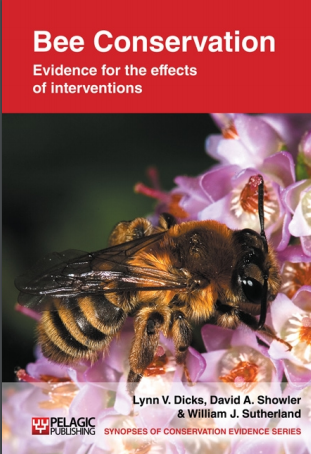Practise wildlife gardening
-
Overall effectiveness category Awaiting assessment
-
Number of studies: 1
View assessment score
Hide assessment score
How is the evidence assessed?
-
Effectiveness
not assessed -
Certainty
not assessed -
Harms
not assessed
Study locations
Supporting evidence from individual studies
A site comparison study of 61 domestic gardens in the city of Sheffield, UK, recorded the abundance and species richness of invertebrates, including bees, along with aspects of garden management, based on questionnaires issued to householders (Smith et al. 2006a,b). Bees were sampled in flight using a 'Malaise trap' set for two weeks between June and September in each garden. 'Management intensity' was calculated from scores for weeding, pruning, watering, dead-heading flowers, collecting autumn leaves, and the use of fertilizers, herbicides and pesticides. An index of 'wildlife management' was based on whether householders fed birds, provided bird nest boxes or used other (unspecified) methods to attract wildlife. Results showed that the number of bumblebee species (but not their abundance) was related to management intensity, with more species in gardens managed less intensively. Solitary bee species richness was related to the number of plant species in the garden (both native and alien), but not directly to the interventions relevant to wildlife gardening. The abundance of solitary bees was related to the number of native plant species, but was lower in gardens with a higher index of 'wildlife gardening' (mostly focussed on encouraging birds).
Additional reference
Smith R.M., Gaston K.J., Warren P.H. & Thompson K. (2006b) Urban domestic gardens (VIII): environmental correlates of invertebrate abundance. Biodiversity and Conservation, 15, 2515†2545
Study and other actions tested
Where has this evidence come from?
List of journals searched by synopsis
All the journals searched for all synopses
This Action forms part of the Action Synopsis:
Bee Conservation
Bee Conservation - Published 2010
Bee Synopsis





)_2023.JPG)














